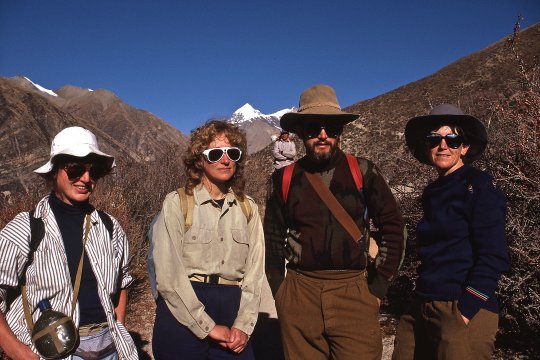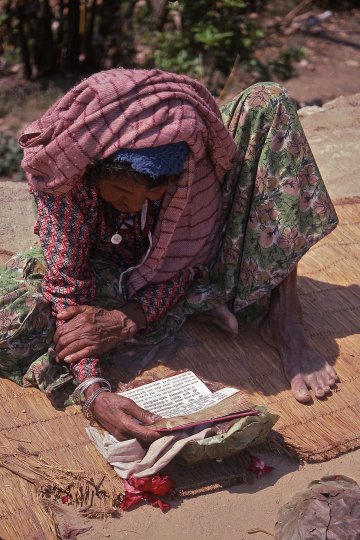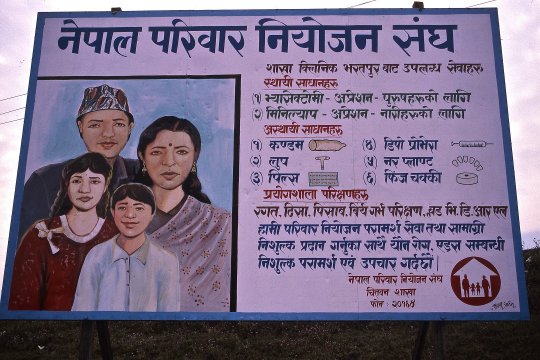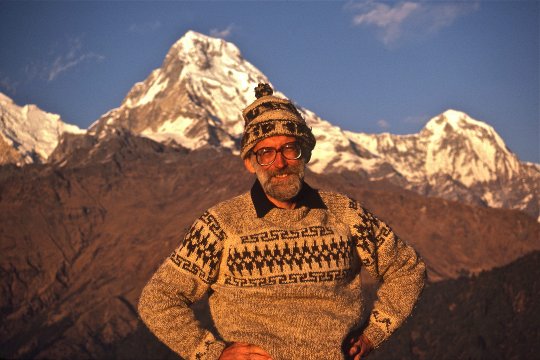|
John Tyman's Cultures in Context Series NEPAL |
|
|
|
756 - 778 |
|
John Tyman's Cultures in Context Series NEPAL |
|
|
|
756 - 778 |
 |
| 764. Tourism, too, was a major source of foreign income in the past. It was undermined by political insecurity and Maoist attacks: but tourists are now returning, to trek in the high country. |
 |
| 766. Adult literacy rates are improving, but there is a significant difference between rates for the sexes -- 62% for men and 35% for women. (Woman in prayer at Kali Mandir) |
 |
| 769. Signs on billboards and walls here advocate a range of birth control techniques, including “the pill”, but with limited success. |

![]()
Text, photos and recordings
by John Tyman
Intended for Educational Use
Only.
Contact Dr. John Tyman at johntyman2@gmail.com
for more information regarding
licensing.
![]()
www.hillmanweb.com
Photo processing, Web page layout,
formatting and hosting by
William
Hillman ~ Brandon, Manitoba ~ Canada